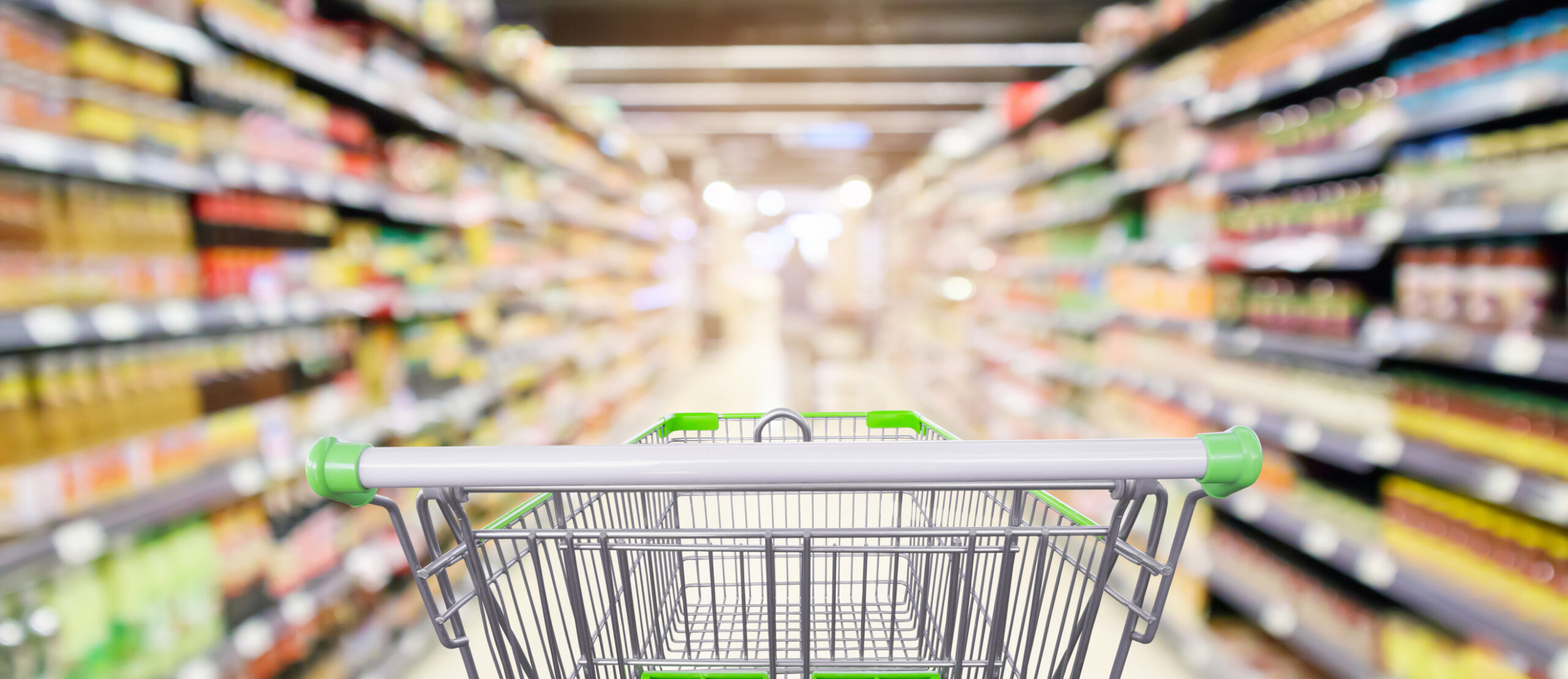Behind Closed Doors: What four months as a personal grocery shopper has taught me about the American diet in the age of COVID-19
It’s still dark outside, but I’m bracing for the morning onslaught of grocery orders that will eminently be available to claim on my shopping app. When the chum hits the water at approximately 6:03 each morning, quick action and an eye for detail will make the difference between a profitable day of filling grocery orders or a frustrating day of what amount to answering munchie-laden booty calls from customers needing a sugar fix.
Such are the stakes for those turning to gig work to mitigate the financial uncertainties of life during the ongoing pandemic. After more than a year of full-time effort developing a health coaching ministry, the costs of investing for the future were still swallowing up all the growing revenue I was producing. Needing a job that left me flexible to work with clients throughout the week, I turned to a personal shopping subsidiary of a major retailer that would allow me to make some income while my fledgling business took slow steps toward critical mass.
What I thought would provide me with some decent pay and flexible hours also provided an inside look at what people are consuming as they navigate the New Normal; including working from home, eating out less often, fewer options for exercise, and additional opportunities for stress. As a health coach, this was of no small interest to me. While I am privy to the dietary details of those seeking my help in transforming their health, I could only guess what kinds of eating habits would take hold among the general populace when an increasing amount of food consumption would be taking place in the home.
After nearly 400 shopping experiences, what I’ve learned provides clues as to the impact our diets are having on our overall health.
While I’ll admit that my observations do not meet the standard of science, I have shopped dozens of times for every demographic imaginable: young, middle-aged, elderly, affluent, poor, conservative and liberal, health conscious and junk food junkies, married and single, city dwellers and rural farm families. I’ve delivered to trailer parks and ramshackle homes literally on the wrong side of the tracks, as well as some of the largest and most opulent gate-guarded estates in the state.
While some socioeconomic generalizations hold true (poor households either can’t afford or choose to eat diets high in non-nutritive, carbohydrate-laden foods), poor food choices transcend these differences. Here are some of the biggest takeaways from my food shopping for Central Iowans:
The most popular items are the least healthy
The twelve most common items I’m asked to purchase, regardless of delivery location, are white bread, white hot dog and hamburger buns, chips, pop, frozen pizza, wieners, frozen potatoes, 80/20 ground beef, macaroni and cheese, bananas, sparkling water, and Cheezits ®.
I wonder sometimes what families would eat if they couldn’t have pizza, hot dogs, hamburgers, macaroni and cheese and tacos. I can usually discern from the shopping list what’s on the menu for the next week. Judging from that, dinner for most isn’t much different than they would get from most of the fast food outlets. Despite years of binge-watching Food Network and making celebrities out of dozens of cooks and food show hosts, it seems clear that most people aren’t actually doing much cooking. For most of my clients, making a priority of meal planning and preparation is key to any fundamental change in their health. Until the tyranny of busyness in families subsides and margin is created to actually change our dietary routines, little progress is likely to be made toward improved health.
Important observation
I’ve found it instructive to see that when it comes to safeguarding their health, the vast majority of customers I’m shopping for see little connection between the food they’re consuming and their protection from disease. Orders loaded with sanitizers, nitrile gloves, face masks, hand soap, etc. include large quantities of foods that provide no nutritional value or immune support. The prevailing view is, apparently, that masks and sanitizers will prevent infection and provide a barrier of resistance, not what they are fueling their bodies with.
Out of stock
Product shortages are one of the most frustrating aspects of gig shopping. It seems that as soon as some item is in short supply, everyone wants it. Initially, it was hand sanitizer and disinfecting wipes. Toilet paper and paper towels were quickly added. Then there was a run on yeast and parchment paper (I assume everyone simultaneously began to bake cookies during lockdown) followed quickly by a run on Minute Rice and pasta. With a Chicago-based candy company stopping production in the early days of Covid, Hot Tamales were frequently on my lists. In June everyone wanted graham crackers, chocolate and marshmallows for S’mores. Then caffeine-free diet Coke and Fresca were prized as slower-selling pop items were dropped due to an aluminum shortage.
I found it interesting that there was never a run on fruits or vegetables.
We love our cheese
While there’s no one brand or variety of cheese that makes the top 12 items, nearly every order includes some kind of cheese. Whether it’s sliced, shredded, block, string, spreadable, cream, and even nacho cheese in a can, we love our cheese. It’s no wonder cheese consumption in the US has grown from 16 to 37 pounds per person over the past 40 years. And that’s not including the Cheezits ®!
Millennials are growing the “healthy” food categories
They may be living in an apartment while they pay down their student debt, but they’re spending more money on products marketed as “healthier for you.” If I’ve got an order for non-dairy milks, organic produce, cage-free eggs, plant-based protein, gluten free snacks, probiotic drinks and supplements, and vegan frozen entrees, it’s more likely than not headed for a 20-something single or married couple. While their purchases may owe as much to their views of animal welfare and modern food processing as it does to the real or perceived health benefits of these items, there’s no denying the traction this segment of the food industry has established. If only they were as passionate about contributing to a living wage for the shopper serving them as they are about sustainable agriculture…
Especially as we age, we are creatures of habit
I’ve had the chance to serve some customers numerous times. For many, especially the elderly, their order contains the identical items every week. From all appearances, their diet consists of a handful of foods that never change. Is this all they know how to prepare? Is it all they like or all their body will tolerate? It’s clear that most are not wanting to spend any time preparing food as most items are of the heat-and-eat variety.
Even the healthy eaters indulge themselves
I’m not sure if anyone is actually eating a truly “pure” diet. Even among those who purchase lots of fruits and vegetables and have me scouring the Health Market aisles for obscure products there is almost always a decadent treat or two tucked into the order. One recent order I shopped for a husband and wife who ran their own nutrition and fitness business ordered ten health food items and ten different indulgent ice cream and ice cream novelty items. As I placed this combination of products on the checkout belt, I could sense the curiosity of the cashier who wondered what was behind this blending of the holy and the profane. I was just as puzzled. Their food choices had all the earmarks of “do as I say, and not as I do.”
My family is not part of the mainstream
After shopping up to 35 orders for other people in a week, I often get to do it again for my family. I’m struck by how out-of-step my grocery list is compared to what I’ve been purchasing for others throughout the week. I’m searching out healthy foods, but I’m hardly glancing at the Health Market aisles. I’m filling my cart with a wide variety of fresh fruits and vegetables. I’m purchasing ingredients needed for actual recipes we’re making, including stops in the spice, seasoning, and baking aisles. I’m purchasing lean meats and fish, whole grains and legumes, and lower-fat real dairy products. I’m spending little time in most of the aisles where the convenience foods and prepared meals are sold. It’s not unusual to skip the entire frozen food section. Of course, you’re going to find some healthier snack items and, thanks largely to two adult sons living at home, some diet pop as well.
I suppose I’ve gotten used to living differently than “most people.” Believing my faith should inform my entertainment choices, my personal debt, the lavishness of my lifestyle, my Sunday routines, how my kids will be educated, my politics, my close friendships, and many other important decisions, it seems only logical that my faith would also inform what will be used to fuel my productivity and guard my health.
Even my grocery cart reminds me that I’m not made for this world.
Eventually, life will return to normal and it will be interesting to see if the personal grocery shopper will fade from view or if this has become another way to simplify busy lives. For the time being, at least, its giving interested people like me an opportunity to see what goes on behind closed doors.


